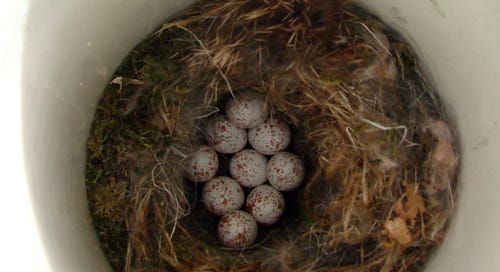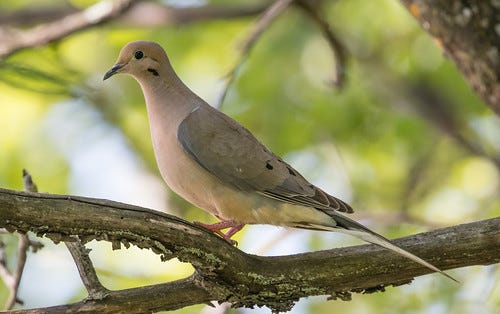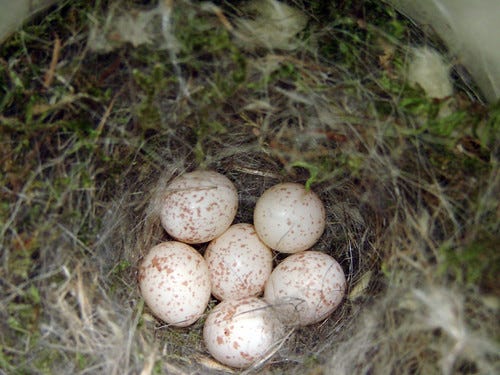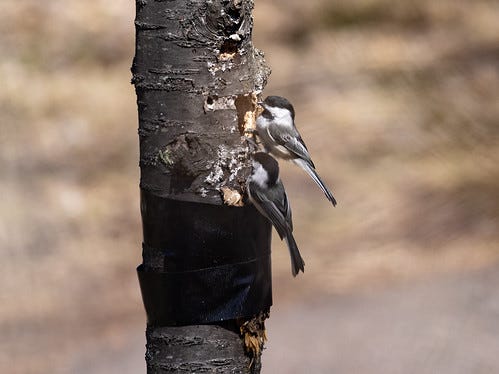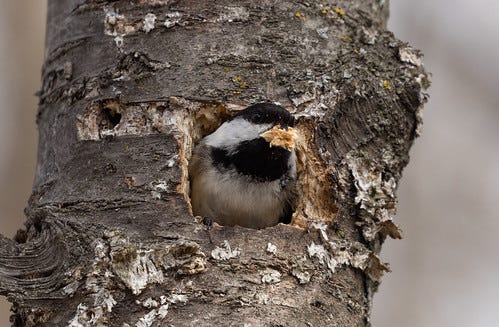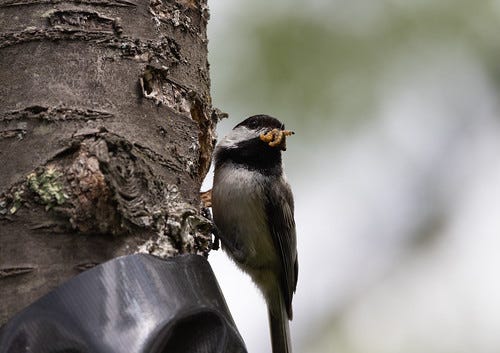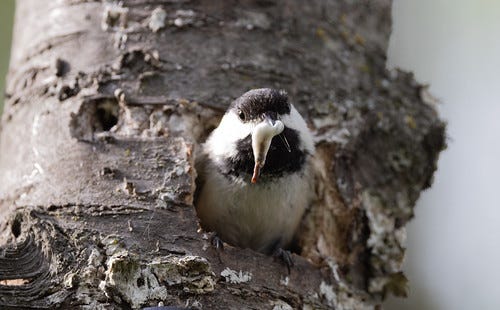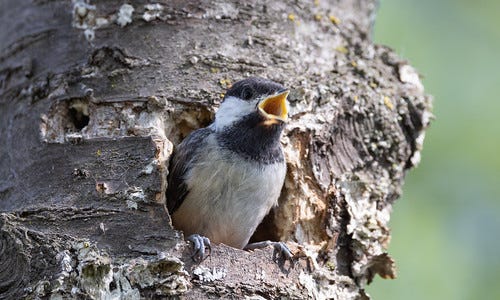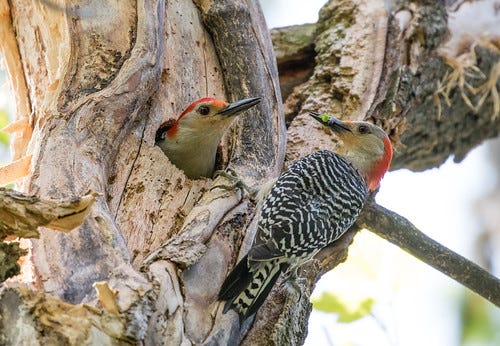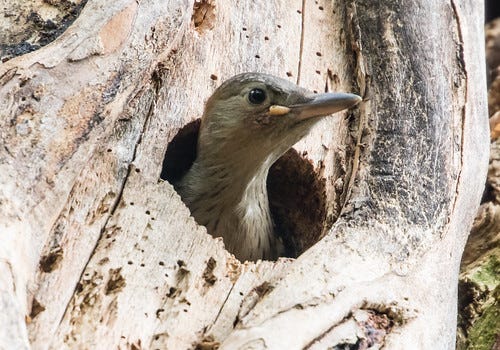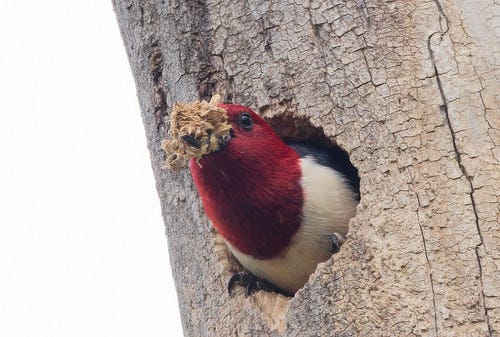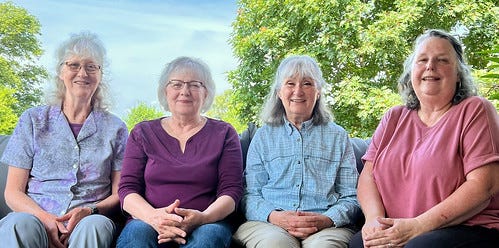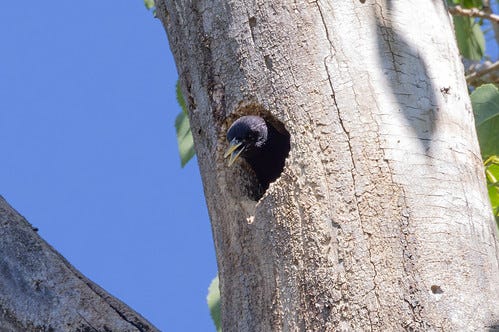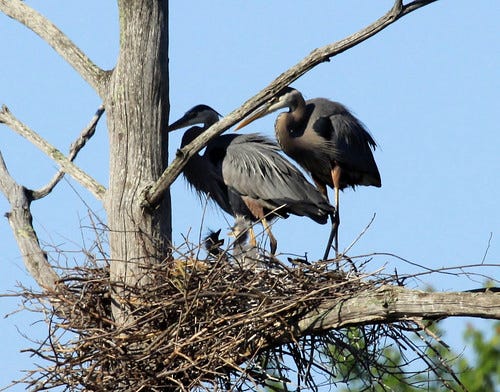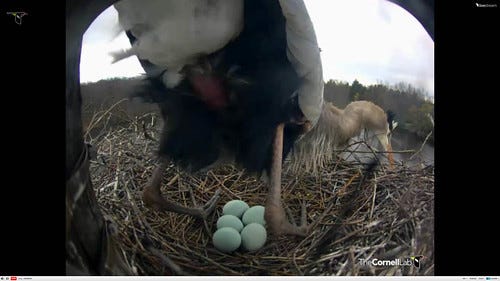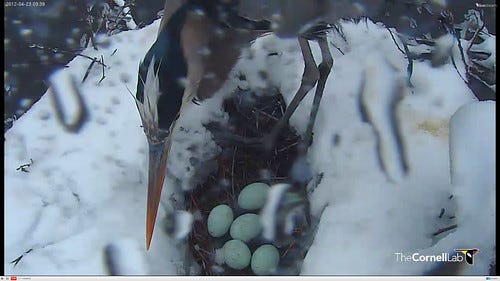(Listen to the radio version of Part 1 here. (Part 2 will be here when I record it this weekend.)
Miguel de Cervantes wrote in Don Quixote, “‘Tis the part of a wise man to keep himself today for tomorrow, and not venture all his eggs in one basket.” That may be sound advice for a man, but it simply doesn’t work for birds—they follow Mark Twain’s “Put all your eggs in the one basket and — WATCH THAT BASKET.”
Birds put so very much time and focus into selecting a nest site and constructing the nest because rearing young is critical. Despite all their diligence, the mortality rate for eggs and nestlings is even higher than that of human babies and children in the days before we could protect them from at least some deadly diseases and accidents with vaccinations and carseats.
That high nest failure rate is why from the start of my birding life I’ve avoided looking for nests. The very first nest I ever chanced upon on my own, a Mourning Dove nest near where we were living in Haslett, Michigan, in April or May 1976, had two beautiful white eggs in it, but the next day, when I peeked in, it was empty. Within a few seconds I saw the eggs, broken, under the nest—they’d fallen through the loose weave of the bottom. I was relieved that I hadn’t led any predators to the nest or otherwise caused it to fail, and quickly researched the fact that flimsy nests are a problem for some Mourning Doves, but it was still heartbreaking.
As a small child, I stopped walking on grass because I imagined all the tiny insects, worms, and other creatures I might crush. That put our swing set, in the back of our yard, out of reach until my big brother Jimmy, knowing how much I loved to swing, excitedly took me outside one morning—he’d scrounged up some rocks and bricks and made a rock path from our backdoor to the swings, just for me.

I eventually got over much of my reluctance to walk on lawns, but in 1976 when Russ and I went on a Michigan Audubon field trip to see Greater Prairie-Chickens booming, my exhilaration at seeing these magnificent birds was diminished as we learned how rare they were in Michigan. (The small group we saw was the last of the species in the state. They would be extirpated—entirely wiped out—by the early 1980s.) When one of my birding friends told me that he had long ago accidentally stepped on a prairie chicken nest, crushing those precious eggs—well, that did it for me. The very thought of crushing any ground nest has kept me on paths and roads my entire adult life, one of many reasons I wouldn’t have cut it as a field researcher.

Over the years, I've heard of and read many accounts of nest predators finding nests to steal eggs or chicks by tracking ornithologists and other nest observers. That put the kibosh on my ever wanting to search for nests myself. While I was at Cornell, I got photos of chickadee nests while accompanying one of the researchers, but she assured me their nest tube design was as predator-proof as it could possibly be, and she was going to be checking them whether I was along or not.
In all the 44 years we’ve lived on Peabody Street, I’ve closely watched just two backyard bird nests—a pair of chickadees nesting in a dead cherry tree in 2021 and Red-bellied Woodpeckers in one of our boxelders in 2016.
While the chickadees were still excavating, I realized that a previously excavated hole below where they were working was too close—as they cut away the rotten heartwood to make the cavity deep enough, they’d cut right through to the old opening.
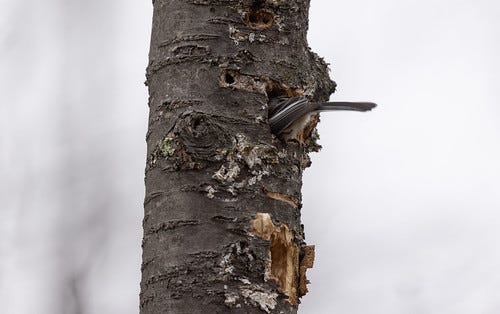
They’d put in a lot of work already, so Russ and I found a large piece of bark to cover the old hole and duct-taped it around the trunk.
It worked, and I got to watch and photograph the parents throughout the nesting cycle and even recorded two of the babies fledging.
The Red-bellied Woodpeckers didn’t have any problems while building.
After a few weeks, the boxelder got badly damaged during a storm, a large limb just below the nest breaking off. Fortunately, the nest itself was okay and I know at least one chick fledged.
This year, a male Red-bellied Woodpecker excavated a hole in another boxelder in my yard and spent two or three weeks plaintively calling at it, but he never attracted a female. Meanwhile, two Red-headed Woodpeckers started visiting my yard and kept chasing him away. That cavity didn’t look at all like the ones I used to see Red-headed Woodpeckers nesting in when we lived in Madison, Wisconsin—those were all higher up, in tall snags without any remaining bark. Sure enough, my neighbor Jeanne Tonkin found the Red-headed Woodpecker nest in exactly that kind of limb in a cottonwood a few blocks down where Peabody Street ends. I walked there quite a few times watching the birds excavating, and then last week I saw them trading off incubating duties. I was more thrilled than I can say.
I went down to Champaign County, Illinois to meet up with my three best friends from college last Wednesday (June 26) through the weekend, so I couldn’t check the nest for almost a week.
This Tuesday, I spent over half an hour waiting and watching, but no sign of the woodpeckers. On Wednesday I found out why—a starling had taken over the cavity.
I feel bereft, as I’m sure they did, but birds can’t afford to wallow in grief. I’m hoping this is early enough in the nesting season that they can try again somewhere else.
The only other nest I’ve closely observed was built by a pair of Great Blue Herons in a dead white oak in Sapsucker Woods just outside the Cornell Lab of Ornithology while I was working there in 2009.

I was thrilled that, despite all the warnings by ornithologists that there would be mortality, all four nestlings survived to fledge.
In 2012, after I’d returned to Duluth, the Lab put up a nest cam and I got to see even more of the entire cycle up close and personal. The cam gave us closeups of the adults making nest repairs, mating, producing 5 eggs, dealing with rain and snow, and raising the chicks.
As I recall, three hatched within about 24 hours, the fourth a couple days later, and the fifth even later, making that one significantly smaller than its siblings.
Scientists at the Lab warned those of us watching the cam that the tiny one would almost certainly die, but little “Fiver” survived to fledge along with the rest of them.
Hope is the thing with feathers, and virtually every living bird1 is the result of a nest that did succeed, produced by a pair that put all their eggs in one basket, watched that basket, and through pluck and luck beat the odds. I’m happy to watch all these finished products, and happy that of the few nests I’ve personally observed, I’ve seen more successes than losses. But as joyful as I feel watching baby birds, and as rewarding as following a few nests has been over the years, I never have and never will seek out nests or return to most of the nests I do notice—nest watching is just too scary and fraught for me.
In rare situations, rehabbers intervene and save a nestling after predation, a storm, or other situation destroys a nest.


